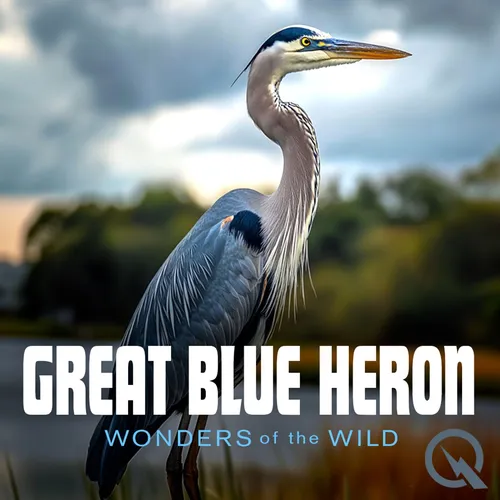The Great Blue Heron- A Symbol of Grace, Wisdom, and Spiritual Connection
- Author
- Inception Point Ai
- Published
- Thu 27 Jun 2024
- Episode Link
- https://www.spreaker.com/episode/the-great-blue-heron-a-symbol-of-grace-wisdom-and-spiritual-connection--60532021
The Great Blue Heron: A Symbol of Grace, Wisdom, and Spiritual Connection The Great Blue Heron, a majestic and captivating bird, has long been revered by various cultures and traditions worldwide. With its striking appearance, graceful movements, and remarkable adaptability, the Great Blue Heron has become a symbol of wisdom, patience, and spiritual connection. This article explores the historical, symbolic, and religious significance of the Great Blue Heron, delving into the ways in which this magnificent creature has captured the human imagination and inspired countless myths, legends, and spiritual practices. The Great Blue Heron has a rich history of cultural significance, dating back thousands of years. In ancient cultures, the heron was often associated with the divine, and its image can be found in various forms of art, from cave paintings to pottery and sculptures. In ancient Egypt, the heron was linked to the god Bennu, who was believed to be the soul of the sun god Ra. Bennu was depicted as a heron-like bird and was associated with creation, renewal, and rebirth. The Bennu bird was said to have created itself from the primeval waters of chaos, and its cry was thought to mark the beginning of time. In ancient Greece, the heron was associated with the goddess Athena, who was revered for her wisdom, courage, and strategic thinking. The heron was seen as a symbol of vigilance and patience, qualities that were highly valued in Greek culture. In Celtic mythology, the heron was often depicted as a messenger between the worlds, serving as a link between the earthly realm and the divine. The Celts believed that the heron possessed the ability to navigate between the realms of life and death, making it a powerful symbol of transformation and spiritual growth. The heron also held significance in various Native American cultures. In the Pacific Northwest, the Tlingit people considered the heron to be a symbol of good luck and prosperity. They believed that the heron's presence in their fishing grounds indicated an abundance of fish and a successful harvest. In the mythology of the Algonquin people, the Great Blue Heron was seen as a messenger of the creator god, Gitche Manitou. The heron was believed to have played a role in the creation of the world, using its long legs to walk through the primordial waters and help shape the earth. Symbolic Significance The Great Blue Heron is rich in symbolic meaning, representing a wide range of qualities and attributes. One of the most prominent symbolic associations of the heron is that of patience and stillness. The heron is often seen standing motionless in shallow waters, waiting for the perfect moment to strike its prey. This behavior has come to symbolize the importance of patience, perseverance, and the ability to remain focused on one's goals. The heron is also seen as a symbol of grace and elegance. Its long, slender legs and neck, combined with its measured, deliberate movements, evoke a sense of poise and refinement. In many cultures, the heron is associated with nobility, dignity, and the ability to navigate life's challenges with grace and ease. Another symbolic aspect of the Great Blue Heron is its association with self-reflection and introspection. The heron's habit of standing still and gazing into the water has been interpreted as a metaphor for the importance of looking within oneself, examining one's thoughts and emotions, and gaining a deeper understanding of one's true nature. The heron is also seen as a symbol of balance and harmony. Its ability to thrive in both water and on land represents the need to maintain a balance between the emotional and practical aspects of life. The heron's grace and poise, even in the face of challenges, serve as a reminder of the importance of remaining centered and grounded in the midst of life's ups and downs. In some traditions, the heron is associated with the element of water and the qualities of emotional depth, intuition, and...
